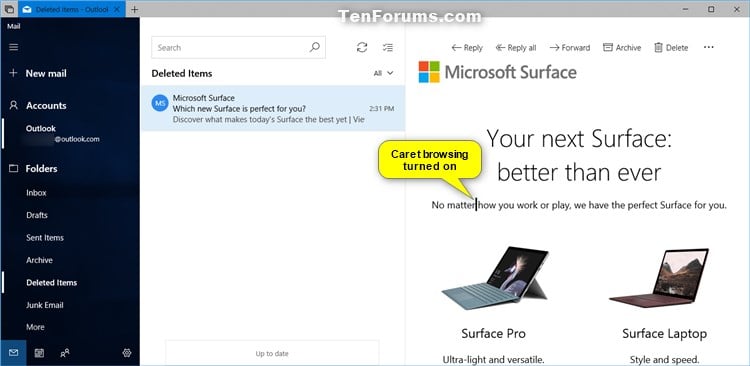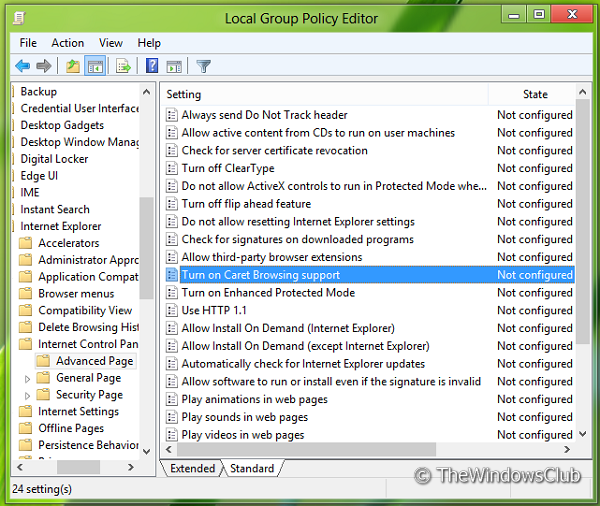

Note that if the column selection mode is enabled, these shortcuts will add new carets instead of extending selection. Make a selection from the current caret position to the same or the nearest column in the next/previous line, and then extend the selection in the same way in the same direction. Select the entire declaration of the containing member, type, or namespace.
TURN ON CARET BROWSING CODE
Make a selection from the current caret position to the opening/closing brace of the enclosing code block. Move Caret to Code Block End with Selection Move Caret to Code Block Start with Selection Make a selection from the current caret position to the beginning/end of the current line. If Use CamelHumps is selected on the Editor | General | Typing Assistance page of the IDE settings Ctrl+Alt+S, the selection will extend to the to the next/previous capitalized word inside identifiers with CamelCase names. Make a selection from the current caret position to the beginning/end of the current word, and then extend the selection word by word in the same direction. Move Caret to Previous Word with Selection Select textĮxtend the selection from the current caret position to one character on the left/right. Move the caret to first/last character in the current document.Īpart from basic caret movement commands described above, there are many other ways to navigate the current context. Move the caret up/down to the current height of the editor area and scroll the document accordingly, and then further with the same step in the same direction.

Move the caret to the top/bottom line of the currently visible editor area, without scrolling. Move the caret to the declaration of the next/previous member in the current type. Move the caret to the opening/closing brace of the enclosing code block. When the caret is right before or after a brace, a bracket, or HTML/XML tag, jump to the item that matches it. Move the caret to the declaration of a type or a function from any position within its body. Move the caret to the first/last character on the current line. This behavior is configurable in the Caret Movement section on the Editor | General settings page. Note that by default, on Ctrl+Right the caret jumps to the end of the current word. If Use CamelHumps is selected on the Editor | General | Typing Assistance page of the IDE settings Ctrl+Alt+S, the caret will move to the next/previous capitalized word inside identifiers with CamelCase names.

Move the caret to the beginning/end of the current word, and then further word by word in the same direction. If you want to change the shortcut for some command, find this command on the Keymap page of the IDE settings Ctrl+Alt+S, and use the context menu to add or remove shortcuts. The most handy commands and their shortcuts are listed in the tables below. You can also toggle multiple carets and have multiple selection ranges.Īpart from the mouse, you can use keyboard shortcuts to speed up editor navigation and selection operations. To do so, select Honor "CamelHumps" word on the Editor | General page of the IDE settings Ctrl+Alt+S. You can double-click an identifier or a word in a comment or plain text to select it.Īfter double-clicking, you can drag the mouse to make the selection snap to entire words.įor identifiers, you can opt not to select the whole CamelCased identifier, but only the capitalized word inside it where you double-click.

As soon as you start typing at a position beyond the end of the line, the necessary number of spaces will be added between the end of the line and the beginning of your input. Optionally, you can select Allow placement of caret after end of line on the Editor | General page of the IDE settings Ctrl+Alt+S to be able to set your caret anywhere after the last character in any line. You can click the mouse in the editor to set the caret to the desired position and drag the mouse to select a continuous text block.īy default, you can only set the caret at characters, whitespaces, and tabs in the current document.


 0 kommentar(er)
0 kommentar(er)
